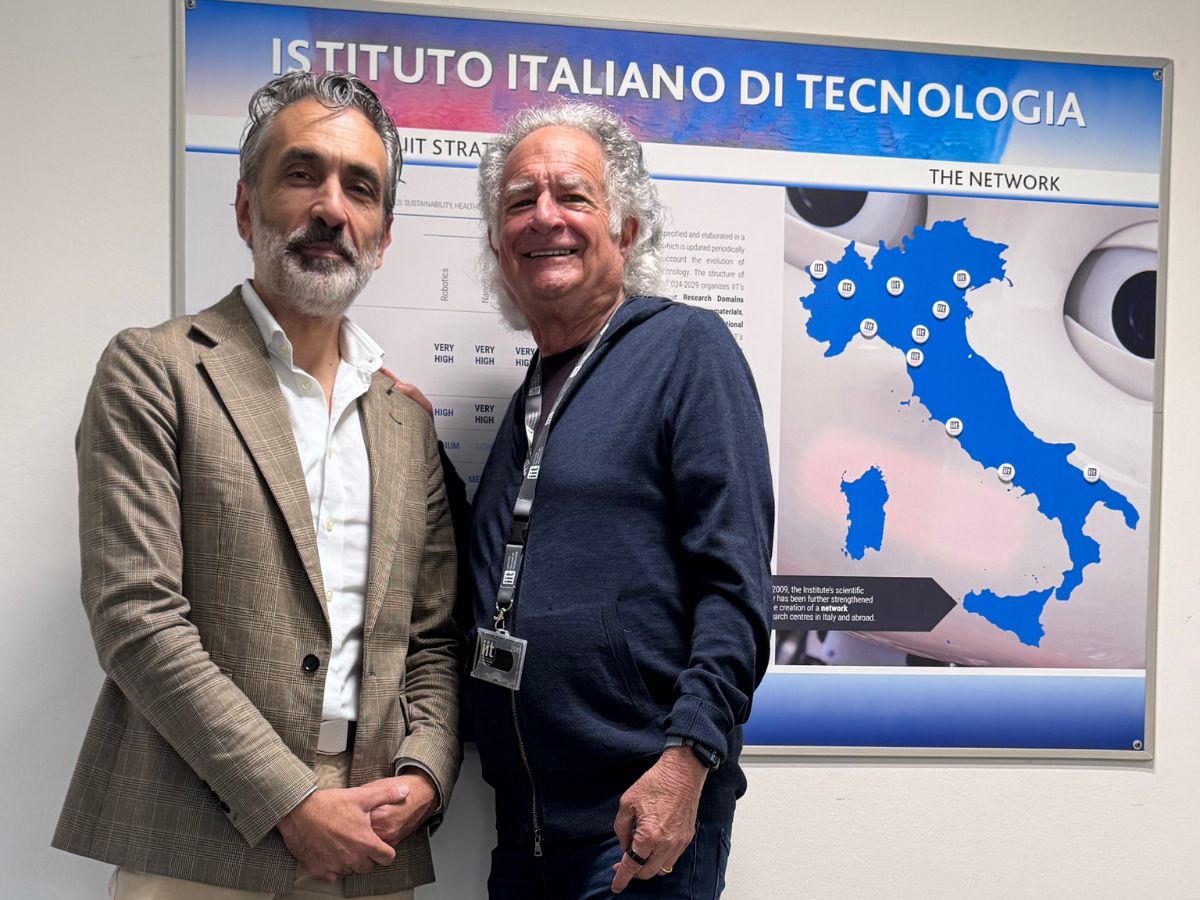Yesterday in Rotterdam awards were presented to the finalists of the European Robotics Technology Transfer Award 2022
Yesterday in Rotterdam, during the European Robotics Forum EFR, awards were presented to the finalists of the European Robotics Technology Transfer Award 2022, the most prestigious form of recognition in the field of European technology and technology transfer, this year in its 18th edition.
Second prize went to the robotic system for the monitoring and maintenance of the San Giorgio bridge in Genoa, designed by the team coordinated by Ferdinando Cannella from the Istituto Italiano di Tecnologia(Italian Institute of Technology) in collaboration with SDA Engineering, Ubisive and the Università Politecnica delle Marche, and implemented by the Camozzi Group in response to specific requirements that emerged following the collapse of the Morandi Bridge in August 2018.
“This award is proof that the immense efforts made in first researching and then applying a revolutionary and necessary robotic solution where many had dared have been recognised on a national level and even more so on an international level. – stated Ferdinando Cannella, Coordinator of the Industrial Robotics Facility for IIT – I hope that this latest milestone can serve as encouragement to continue alongside our partners in perfecting this solution and rendering it applicable to an ever-increasing number of constructions, while at the same time researching new solutions to amplify the types of infrastructure to which it can be applied, rendering our robots more attractive to potential users”.
The euRobotics Technological Transfer Award is one of the most important events in the European Robotics Forum and is open to submissions of significant examples of technology transfer in the robotics and automation sectors deriving from cooperation between research and industry. The areas include robot application, robot development and development of robot components. The 3 most significant devices are awarded with cash prizes and certificates.
In particular, the robotic system that won second place consists in 4 robots installed on the sides of the San Giorgio bridge; 2 are in charge of inspecting the underside of the deck and the relative processing of data for determining any anomalies (Robot Inspection), while the other 2 clean the wind barriers and the solar panels (Robot Wash). This automatic robotic inspection system is the first in the world and provides a model that is scalable on a global level, aimed at increasing safety not only for this type of infrastructure, but also of any civil work that may require automatic monitoring.
The control systems for the San Giorgio bridge also involve Movyon, the research and innovation centre of the Autostrade per l’Italia Group, which operates on the robotics front through the automation of continuous monitoring and assessment activities as well as the accurate analysis of the evolution of events involving infrastructure. Movyon makes use of the ARGO platform, which contains technology for asset management, artificial intelligence, IoT and robotics for structural monitoring, inspection processes and the digitalisation of bridges, viaducts and tunnels.
The idea for the robots originated with an architectural proposal from the Renzo Piano Building Workshop firm, which the Italian Institute of Technology took over and amplified in 2018, designing a one-of-a-kind robotic system that was then developed on an industrial level by Camozzi. The system is unique because it is the first time that fully autonomous robots (not requiring an operator either on-site or remotely) have been installed and are effectively operative on a civil structure. IIT donated the project to the City of Genoa and created a team of cutting-edge companies for implementation, which includes the Camozzi Group.
Robot Inspection weighs more than 2,200 kg, is fitted with 82 wheels for moving the two axles and is more than 7 metres wide. It is fitted with a retractable inspection arm consisting of a fixed section and a mobile section, both in carbon fibre, which extends to approximately 17 metres in length overall and can reach the centre of the deck from the side of the bridge. The exterior of the deck is monitored via this carbon-fibre arm, which can run along the entire length of the bridge, retracting near to the pillars. It carries high-resolution cameras and sensors to measure the condition of the surfaces, from the deterioration of paint to corroded elements and to the status of welding points. The cameras send real-time images of the entire infrastructure. Thanks to computational models, assessment of the data collected highlights findings and anomalies.
Robot Wash weighs approximately 2,000 kg and has 56 wheels to distribute the load over the edge of the bridge. It is more than 3.5 metres high and almost 8 metres long and is divided into two parts; one for cleaning and one for recharging. Robot Wash removes dust and other deposits from the solar power system and the glass wind barriers that border the lanes, thus keeping the infrastructure functional and efficient. One particular feature of the robot is its sustainable use of water resources. The water used for washing the structures is collected from rainwater and other water that condenses on the infrastructure itself. Robot Wash is fitted with sensors that monitor both the transparency of the glass wind barriers and the quantity of water on the surfaces. These two parameters allow the robot to determine when to clean these surfaces. In the event of a shortage of water due to dry spells and low humidity, Robot Wash is fitted with a blower device that can eliminate dust, keeping the infrastructure efficient until a sufficient quantity of water for a more intense clean is available.
The European Robotics Forum ERF 2022 took place in Rotterdam from 28 to 30 June. The event brings together representatives from all the European robotics stakeholders, from the industrial sector and research as well as both public and private investors, and is aimed at facilitating networking among these figures, offering plenary sessions, seminars and workshops.





